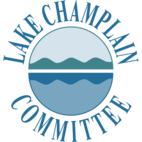Cumberland Bay Dredging - Twelve Years Later
July 2012

For many years, the New York State Department of Environmental Conservation has warned anglers that consuming yellow perch, brown bullhead, or American eel caught in Cumberland Bay posed a risk to their health. This year perch and bullhead were removed from the list. The perch and bullhead are now considered safe to eat because of actions taken over a decade ago to dredge PCB-laden sediments from the bay.
The Cumberland Bay PCB bed was discovered following the first lake-wide toxic contaminant study, a project initiated following substantial advocacy by the Lake Champlain Committee (LCC). LCC then championed the clean-up strategy to remove the PCBs.
The wastes in Cumberland Bay were dredged out between April of 1999 and October of 2000. Over 140,000 tons of contaminated paper sludge were removed from a 57 acre area of the bay. The sludge had been directly deposited into the bay prior to the 1973 construction of the waste-water treatment facility in Plattsburgh. PCBs in the sludge had been used as an ink-carrier in copy paper produced by Vanity Fair Paper Company and later Georgia Pacific after the companies merged. Wastes had to be shipped to Buffalo for incineration while less hazardous material was land-filled in Quebec.
The term PCBs or poly-chlorinated biphenyls refers to a group of 209 compounds. They all contain between two and ten chlorine atoms attached at various locations around double carbon rings. The compounds are odorless, tasteless, clear to pale, viscous liquids. The more chlorine atoms a PCB has, the more yellow and thick it is. The liquids dissolve in oils and fats, but not water. They were used as coolant fluids in transformers, capacitors, and electric motors.
PCBs were manufactured in the United States from the late 1800s until the late 1970s with peak production occurring in the 1960s. The first PCB-like compound was discovered in 1865, but it wasn’t until 1881 that German chemists were able to synthesize a PCB purposefully. Wide scale production began in the late 1920s. Congress banned production of PCBs in the United States in the late 1970s.
PCBs can cause cancer as well as alter the nervous, reproductive, immune, and endocrine systems. Not all PCBs are equally toxic. The 209 compounds are divided into two groups – coplanar and noncoplanar. The coplanar PCBs are considered more toxic. Today, the Environmental Protection Agency’s maximum allowed contaminant level is 50 parts per million. By comparison, the Cumberland Bay sludge had PCB concentrations as high as 1,850 parts per million.
It wasn’t long after commercial production began that the detrimental health affects of PCBs were noticed. At first, concern focused on industrial exposure. By 1937 the Harvard School of Public Health held a conference on the medical consequences of PCB exposure. However it wasn’t until the 1970s that impacts on wildlife began to be recognized.
Cumberland Bay is not the only place in the lake where PCBs occur, though concentrations there were higher than anywhere else in Lake Champlain. On Lake Champlain there is a whole-lake advisory recommending only up to one meal per month of large lake trout (>25”) and walleye (>19”) (Vermont’s advisories are similar) in addition to the specific Cumberland Bay advisory. Overall New York has a general consumption advisory for all freshwater fish in the state (eat up to four -one-half pound - meals per month of fish taken from the state’s freshwaters) and specific advisories for over 130 waterbodies.
Since PCBs are no longer produced, the persistence of consumption advisories is a testament to their durability. The usual agents of decomposition – oxygen, heat, acids – seem to have minimal affect on PCBs. There are a few bacteria that degrade them, but these are not wide-spread in nature. PCBs have half-lives between 8 and 15 years, meaning that even after that time half of the original product is still around.
Benjamin Franklin first noted “an ounce of prevention is worth a pound of cure.” PCBs are a reminder how apt his observation was. Unacceptably high levels of contaminants persist decades after their production ceased. Over ten years elapsed between the removal of Cumberland Bay’s contaminants and the drop in contaminant levels in the fish. Even that time is not enough for American eels, which still have a consumption-advisory. Preventing pollution from reaching the environment is always easier than trying to remove it once it is there.
Lake Look is a monthly natural history column produced by the Lake Champlain Committee (LCC). Formed in 1963, LCC is the only bi-state organization solely dedicated to protecting Lake Champlain’s health and accessibility. LCC uses science-based advocacy, education, and collaborative action to protect and restore water quality, safeguard natural habitats, foster stewardship, and ensure recreational access.
Get involved by joining LCC using our website secure form (at www.lakechamplaincommittee.org), or mail your contribution (Lake Champlain Committee, 208 Flynn Avenue - BLDG 3 - STUDIO 3-F, Burlington, VT 05401), or contact us at (802) 658-1414, or lcc@lakechamplaincommittee.org for more information.
